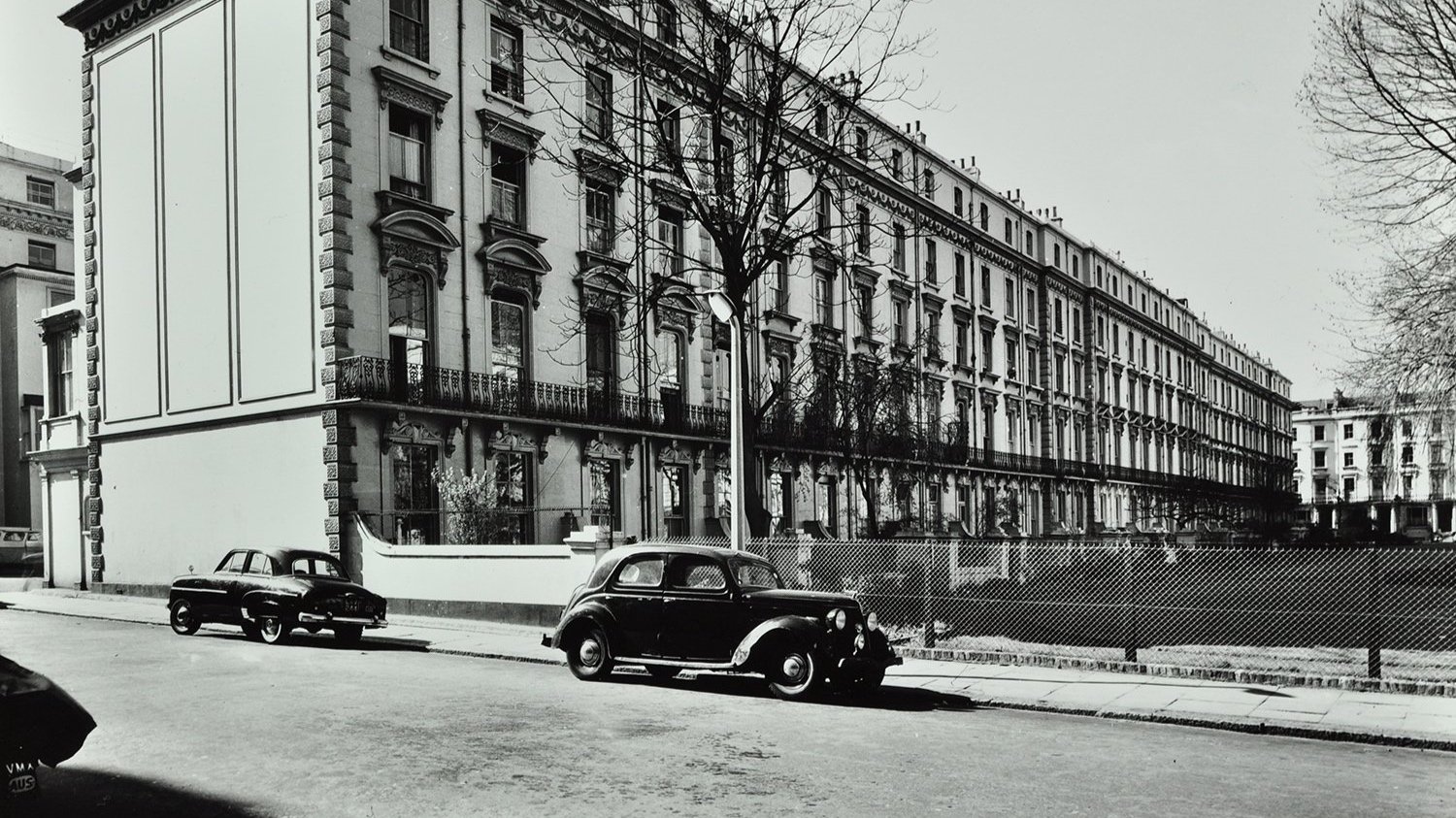
history
38-45 Leinster Square 1974 © London Metropolitan Archives (City of London).
19th Century
Bayswater was originally home to market gardens and nurseries, but by the mid-19th century the city was expanding in every possible direction.
Both Leinster Square and Prince's Square are largely the work of one obscure speculator, George Wyatt. Building began in 1856 and was finished by 1864, although Leinster Square already had some residents by 1858. The magnificent plane trees which dominate the garden date from this time.
The first inhabitants of Leinster Square were wealthy, but Bayswater's social character soon grew rather mixed. Before many years had passed, many buildings had become hotels, apartments and lodging houses, some of which remain to this day.
Leinster Square, looking West 1963 © London Metropolitan Archives (City of London).
20th Century
Like so much of London, Leinster Square did not escape the Second World War unscathed. The plane trees survived, but the iron railings were taken away for scrap metal, and the first six houses on the road lost their porticos.
The garden, no longer private, declined until 1977, when local residents banded together to refurbish it, installing new railings and extensive planting, with camellias, azaleas, rhododendrons, and snowy mespilus.
There are many scented plants: eucryphias, and a fine viburnum by the west gate. The ceanothuses produce a truly startling display of electric blue in late spring.
2-14 Leinster Square 1974 © London Metropolitan Archives (City of London).
21st Century
By the beginning of the new century the garden was starting to fall into disrepair, needing substantial investment to restore railings, replace paths and re-landscape. In 2014, one of Leinster Square’s property developers generously donated the necessary funds for this work, including new seating areas and elegant circular benches. This donation also enabled us to significantly enhance the planting to become the beautiful oasis it is today.
Garden Square News published a feature on the refurbishment at the time, you can read their piece here.
Famous Residents
W. H. Hudson
The Argentinian writer and ornithologist William Henry Hudson moved into the boarding house at 11 Leinster Square when he arrived from South America at the age of 32. Two years later, in 1876, he married his landlady Emily Wingrove, a singer and music teacher, and they lived together in great poverty until his gifts as a writer were finally discovered. Hudson was a naturalist as much as he was a writer, and by 1891 he had helped to found the Society for the Protection of Birds (now the RSPB), and became its first Chairman. By the time he died in 1922, Hudson was famous throughout the world, and in 1925 a bird sanctuary was created in his memory in Hyde Park, and decorated with a lovely relief by Jacob Epstein to evoke Green Mansions, his most popular book. You can find out more about W. H. Hudson here.
More Info
For more on Leinster Square see wikipedia.
For more information about local history, see the 'British History Online' article on Bayswater here.
Photo below 38-57 Leinster Square 1961 © London Metropolitan Archives (City of London)







